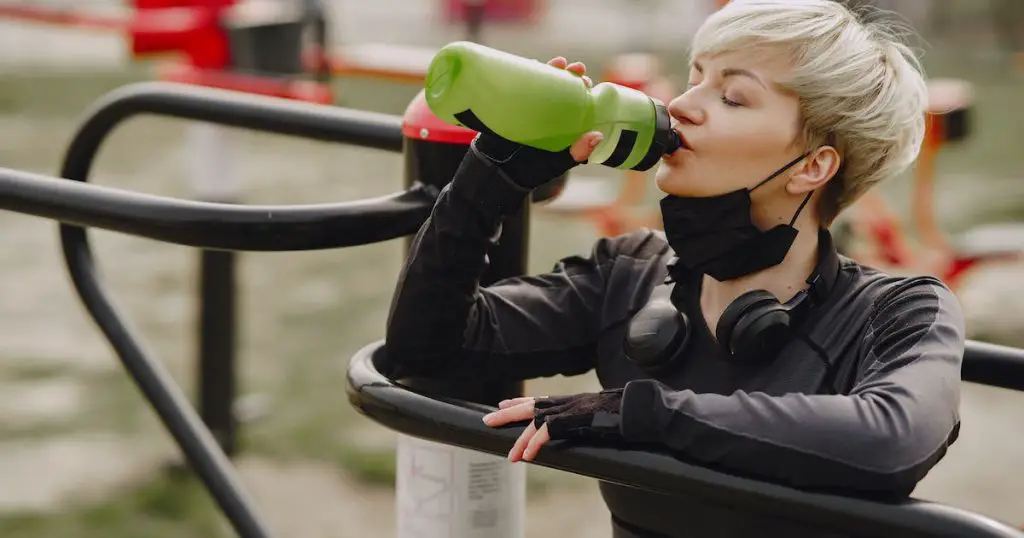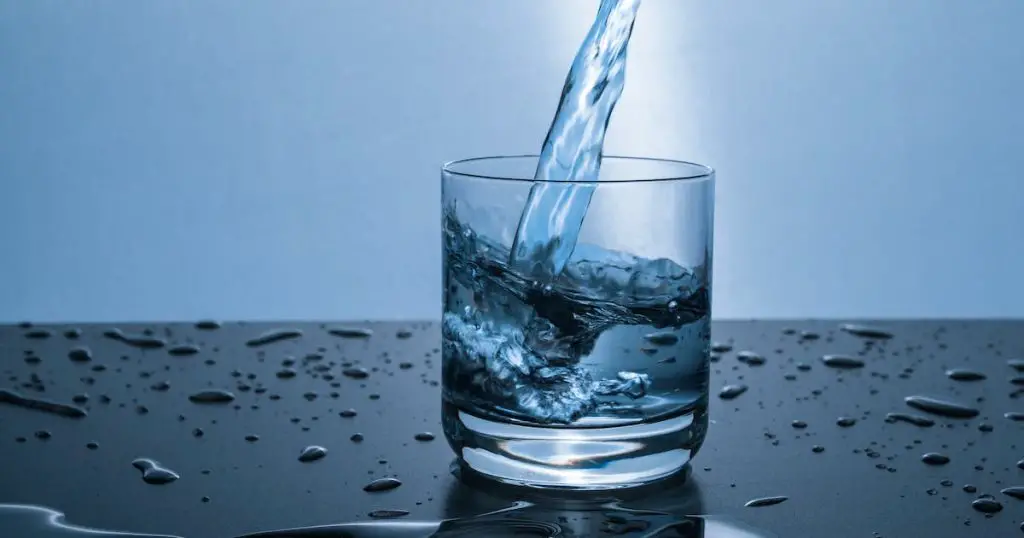“Is Prescott water safe to drink?” – a question that has piqued the interest of many. The safety of drinking water, a vital resource that intertwines with every aspect of life, is paramount. This holds true in Prescott, a city celebrated for its rich history and splendid natural surroundings.
In this piece, we explore the fascinating saga of water safety in Prescott, providing insights to alleviate any concerns and ensure you have the most accurate information at your fingertips.
Water is more than just an elixir of life.

It’s a cornerstone of public health, a balancer of ecosystems, and an integral component to envisioning a sustainable future. As such, understanding the journey of the water that fills your glass in Prescott is as crucial as it is captivating.
History of Water Supply in Prescott
As we delve into Prescott’s water history, we’ll see that the city’s relationship with this vital resource is deeply rooted and as age-old as the city itself. In the initial days, local wells and springs were the primary sources of water.
This water, deemed pure, was a one-stop solution for a variety of uses – from drinking and cooking to cleaning and irrigation. However, with the city’s expansion, these resources began to feel the strain, leading to questions about the sustainability and quality of the water supply.
The dawn of the 20th century marked a significant shift in Prescott’s water history. The city began sourcing water from larger, more distant bodies, including the Hassayampa River.
While this step effectively addressed the issues of quantity, it brought new challenges to the forefront. Long-distance transportation of water increased the risk of contamination, propelling water treatment to become a concern of critical importance .
Faced with these challenges, city leaders acknowledged the significance of securing a safe water supply for their burgeoning community. This recognition laid the groundwork for Prescott’s ongoing commitment to water safety – a commitment that we will explore in-depth in the sections to come.
The Source of Prescott’s Drinking Water
In order to tackle the question of “Is Prescott water safe to drink?” it’s imperative to trace the journey of water from its source to our taps. Prescott’s drinking water is primarily sourced from a combination of ground water and surface water.
Groundwater, being filtered naturally through layers of earth, generally contains fewer contaminants. It’s sourced through wells scattered across the city and its outskirts. Surface water, on the other hand, comes from nearby lakes and rivers, including the Hassayampa River and Watson Lake, among others.
While surface water sources are plentiful, they are also more susceptible to pollution from human and environmental factors. Therefore, they require a comprehensive treatment process before they are safe for consumption.
Water Treatment Process in Prescott
Prescott takes its water treatment process very seriously, with the understanding that this process is the crucial gatekeeper between potential contamination and the health of its residents. Once the water is collected from various sources, it’s transported to a treatment facility.
The first step in the treatment process involves coagulation and flocculation, where chemicals are added to the water to bind with dirt and other particles. The combined particles form larger clumps, or “flocs”, which are then easily removed in the next step – sedimentation.
After sedimentation, the water moves to the filtration phase, where it’s passed through layers of sand, gravel, and charcoal to remove any remaining smaller particles. The water is then disinfected, typically with chlorine, to kill any remaining bacteria or microbes.

In this way, the city of Prescott ensures that the water that eventually flows from your tap is clean, safe, and ready to drink. In the upcoming sections, we will take a closer look at how Prescott’s water quality measures up to the standards set by regulatory authorities, and also explore some of the concerns surrounding Prescott’s water safety.
Quality Standards for Drinking Water
One cannot underestimate the significance of water quality standards when discussing water safety. These standards, set by organizations like the Environmental Protection Agency (EPA) in the United States, serve as benchmarks that guide cities to ensure their water supply is safe for consumption.
The EPA sets forth a series of regulations under the Safe Drinking Water Act, outlining the maximum levels for various contaminants that may be present in the water .
Prescott’s water quality measures well against these stringent EPA standards. Regular testing and monitoring are conducted to identify and address any potential concerns proactively. The results of these tests are made publicly available in an annual Water Quality Report, promoting transparency and trust between the city administration and its residents.
Controversies and Issues Surrounding Prescott’s Water Safety
Like any city, Prescott has faced its share of controversies and issues related to water safety. There have been instances in the past where Prescott’s water supply was scrutinized due to concerns over certain contaminants. For example, in 2015, reports suggested elevated levels of arsenic, a naturally occurring element, in certain water sources.
The city administration, in response, took swift measures to address these concerns. Upgrades in treatment processes and infrastructures were implemented to ensure the arsenic levels were reduced to well within the EPA’s safety standards.
While such instances can be concerning, it’s important to remember that Prescott has a robust system in place to handle such issues. Their prompt response and continual commitment to ensuring water safety showcase the city’s dedication to its residents’ well-being.
Testing and Monitoring of Prescott’s Drinking Water
A crucial aspect of ensuring water safety is the regular testing and monitoring of the water supply. Prescott follows a rigorous schedule for water testing as stipulated by the EPA’s regulations.
Water samples are collected from different parts of the city and examined for various contaminants, ranging from bacteria and viruses to chemical pollutants and heavy metals.
The results of these tests are crucial in informing any necessary modifications to the water treatment process, as well as to alert the city of potential contamination issues. This regular monitoring gives residents confidence that the city is constantly vigilant in ensuring the water’s safety.
Comparing Prescott’s Water with Other U.S. Cities
Prescott’s water quality stands tall when compared with other U.S. cities. In fact, Prescott’s commitment to water safety and regular testing often results in better water quality metrics than many larger cities. This can be attributed to the city’s smaller population, its use of relatively unpolluted water sources, and its effective water treatment processes.
That said, like other cities, Prescott faces the ongoing challenge of maintaining water quality in the face of increasing urbanization and environmental changes. But its track record suggests a strong capacity to tackle these issues proactively.
Potential Health Impacts
While the city of Prescott goes to great lengths to ensure the quality of its drinking water, the potential health impacts of drinking water can vary based on numerous factors. These include the individual’s health status, the presence of particular contaminants, and the duration of exposure.
One such health concern, as previously discussed, was the detection of slightly elevated levels of arsenic in the water. Long-term exposure to arsenic in drinking water can lead to health problems such as skin disorders and even certain types of cancer.
In response to this, Prescott upgraded its water treatment processes to effectively reduce arsenic levels.
In summary, while occasional issues may arise, Prescott’s responsive approach, stringent testing and effective water treatment processes ensure that the city’s drinking water remains safe and healthy for its residents.
Common FAQs about Prescott’s Water Safety:
In this section, we will be delving into some of the most common inquiries and curiosities that surround our topic.
What is the source of Prescott’s drinking water?
Prescott’s drinking water primarily comes from a combination of ground and surface water sources. These include local wells, the Hassayampa River, and Watson Lake.
Is Prescott’s water tested regularly?
Yes, Prescott follows the testing guidelines set forth by the EPA’s regulations, which involve regular testing of water samples collected from different parts of the city.
How does Prescott’s water quality compare to other U.S. cities?
Prescott’s water quality often scores better than many larger U.S. cities due to its smaller population, its use of relatively unpolluted water sources, and its effective water treatment processes.
What are the potential health impacts of drinking Prescott’s water?
While Prescott’s drinking water is generally considered safe, potential health impacts can vary based on individual health status, the presence of specific contaminants, and the duration of exposure. The city takes any potential health concerns very seriously and acts promptly to address them, as seen in its response to the detection of slightly elevated levels of arsenic.
Final Verdict
Addressing the question, “Is Prescott water safe to drink?” requires a detailed understanding of various factors – from source and treatment to testing and monitoring. Based on extensive analysis, it is evident that Prescott places a high priority on water safety.
Through rigorous testing, effective treatment, and proactive responses to concerns, the city ensures its residents have access to safe and clean drinking water.
While no city’s water supply is entirely immune to issues, the key lies in how these issues are handled. Prescott’s dedication to maintaining the quality of its water supply, coupled with its transparency in communication, provides ample reassurance that the city’s drinking water remains safe for its residents.
Thank you for reading! Please feel free to reach out if you have any further questions or concerns about Prescott’s drinking water.



Leave a Comment
You must be logged in to post a comment.